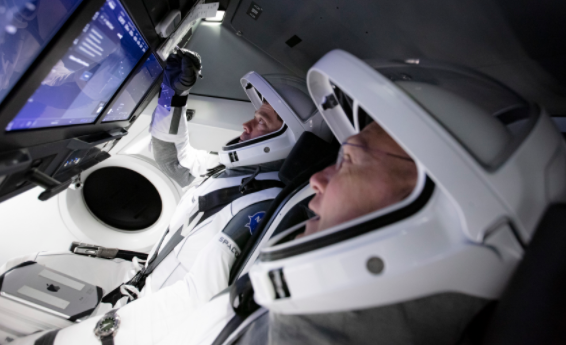NASA and SpaceX have proclaimed that a 24hr weather delay of their prearranged launch of 4 astronauts into orbit for the American space agency’s 1st full-fledged human mission using a confidentially owned spacecraft.
SpaceX’s recently structured Crew Dragon capsule was rescheduled for launch stop the Falcon 9 at 7:27 pm Eastern time from Kennedy Space Center.
The crew for the flight to the International Space Station contains 3 American astronauts. The 4th crew member is a Japanese astronaut and has made his 3rd trip to orbit after flying on the United States space shuttle in the year, 2005 and a Russian Soyuz spacecraft in the year, 2009.
Image from NASA
The journey to the space station was stretched from about 8hrs to a little over 24hrs by the new launch time and it is considered as Elon Musk’s SpaceX’s 1st “operational” mission for the Crew Dragon.
A so-called test flight of the vehicle to and from the space station with 2 crewmen aboard the Dragon in August has marked the 1st space flight of astronauts which was launched from United States soil in 9yrs, resulting at the end of the shuttle program.
The officials from NASA just signed off on Crew Dragon’s ultimate structure previously this week, capping a nearly 10yr development phase for SpaceX under NASA’s public-private crew program.
The arrival of the Falcon 9 and Crew Dragon represented the latest era of commercially advanced space vehicles that is owned and functioned by a private entity rather than NASA and it is being used to carry Americans into orbit.
As per NASA’s chief, the history was being made as they are launching an operational flight to the International Space Station.
If Elon Musk came into contact with the astronauts was not clear but improbable since the crew has been in routine quarantine for weeks before they went inside the flight.
The space agency contracted SpaceX and Boeing in the year, 2014 to create competing space capsules that were targeted at substituting the shuttle program that ended in the year, 2011 and weaning the US off dependence on Russian rockets to send United States astronauts to space.







